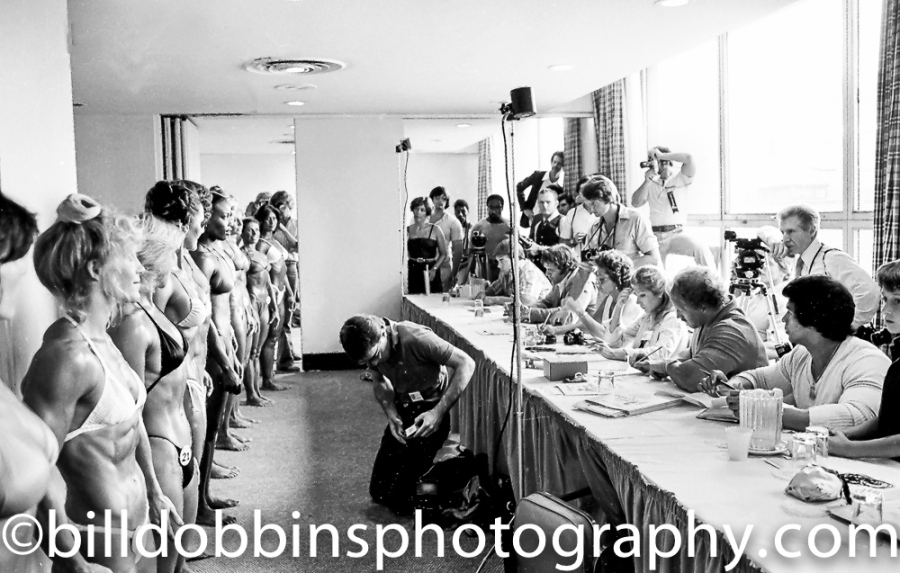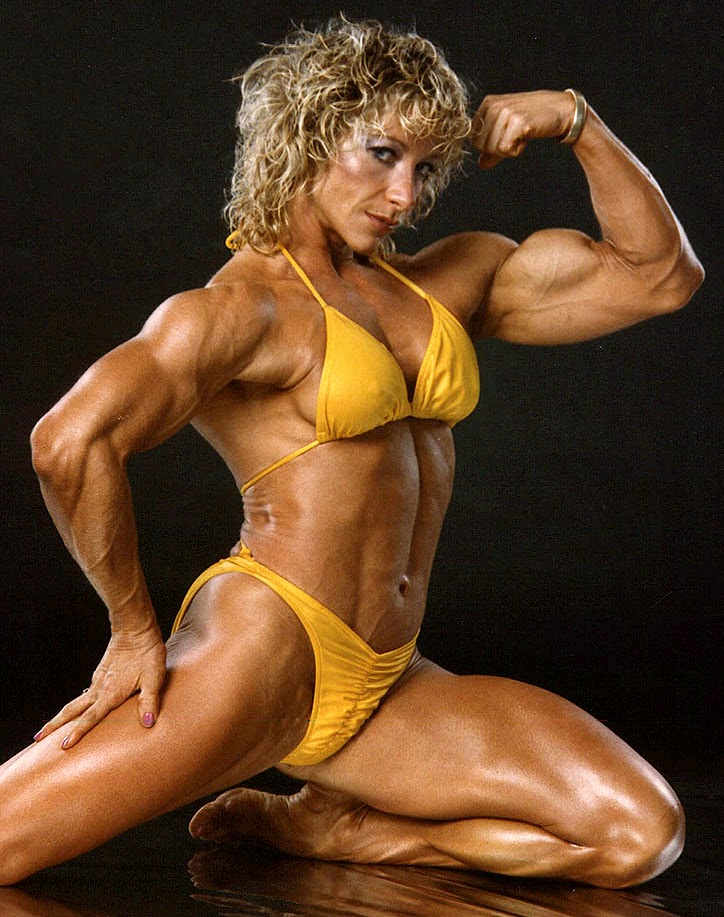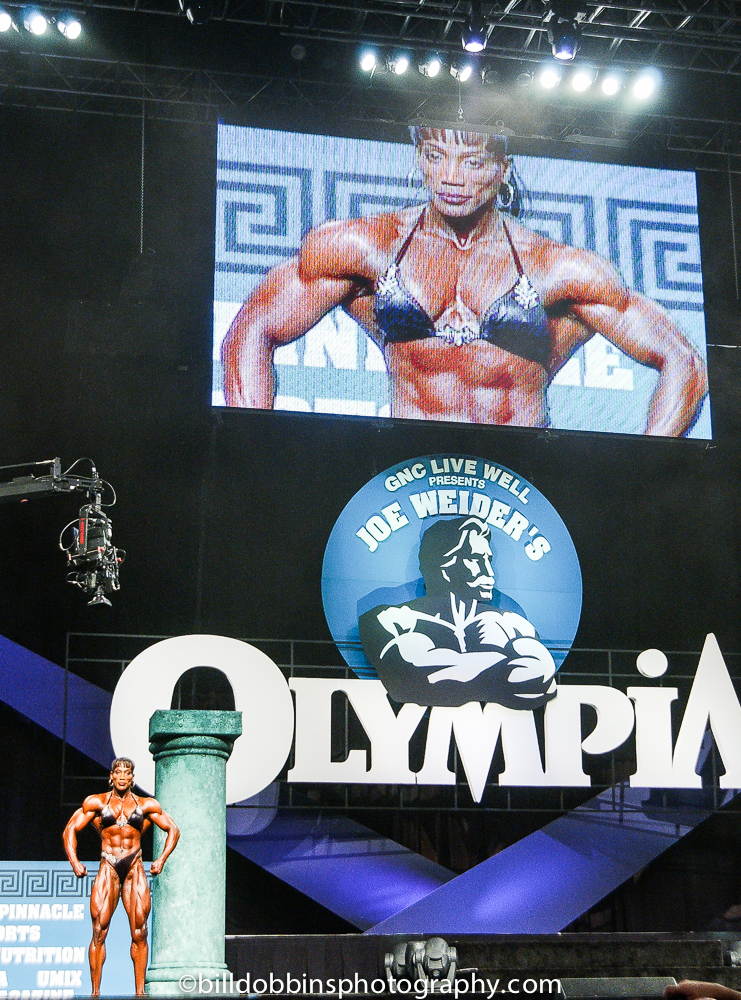WOMEN’S BODYBUILDING:
How It All Got Started
By Steve Wennerstrom
IFBB Women’s Archivist/Historian
I got involved with bodybuilding for women as a writer, editor and photographer starting in 1979. But the sport had already been evolving for several years before that and I was curious to know the details of how that early history had unfolded. So I commissioned Steve Wennerstrom, the official IFBB Historian For Women’s Bodybuilding, who had been there at the beginning, to write up an account to preserve this information for posterity. – Bill Dobbins

Women’s curiosity regarding their own strength and physical capabilities is really nothing new. In the history of humankind – and in this case womankind – there have been many examples of women who possessed considerable strength, and dating back to the 1800’s, for example, virtually every circus featured a female who demonstrated impressive feats of strength.


As time passed and with the growing popularity of Muscle Beach on the sands of Santa Monica, California, where muscle, power, and strength had long been a male domain, women were further introduced to the possibilities of achieving a more pronounced level of physicality through weight training and acrobatics.
Led by Abbye ‘Pudgy’ Stockton and a handful of others, these early pioneers of the women’s physical culture movement became internationally known and helped pave the way for a coming generation of females who would dedicate themselves to reaching an ultimate level of physical development.

By the 1960’s and into the 70s, increased participation in women’s sports and Title IX added to the deeper awareness and the growing interest girls and women possessed.
As was generally recognized during those days, one of the oldest and most widely accepted rules of the ‘Great American Femininity Game’ used to decree that it was all right for girls to be good sports, but never to be good at sports. That thought process was about to be dramatically altered with the coming of the 80s.



Prior to 1977 bodybuilding had been considered strictly a male domain.The contests offered men the opportunity to display the hard earnedresults of toiling long hours in the gym to develop maximum muscular development, and judges, following a specific set of guidelines, selected the individual who best demonstrated the look of the ideal physique. There was no such opportunity offered to women.
From a simplistic standpoint, it could be assumed that the sport of women’s bodybuilding developed on its own as an outgrowth of the men’s sport, and coupled with the phenomenon of the women’s sports movement during that time, it was an overwhelming certainty that sooner or later women would take their place on the bodybuilding stage.

But the birth of women’s bodybuilding did not happen by chance. The primary architect was Henry McGhee – an employee of the DowntownCanton YMCA – who carried a strong belief that women should share the opportunity of displaying their physiques and the results of their weight training the way men had done for years. These contests bore no relation to a conventional beauty pageant – and when an Ohio woman named
Gina LaSpina won his first event in 1977, it was clear by her lean, muscular physique that the women of bodybuilding would be very different from any prior event where bikini-clad females had taken the stage in a judging format.

Indeed, women’s bodybuilding would be about the development of muscle with the winners chosen by a combination of their given genetics, overall proportions, and muscular balance, all in tandem to present the most aesthetically pleasing female physique.
So with McGhee’s events serving as ground zero in the birth of the sport, they helped lay the groundwork for women’s bodybuilding contests in the immediate future. McGhee also helped spread the news of his events by creating a short-lived United States Women’s Bodybuilding Association, and women from across the country took notice.



The idea quickly caught fire and by 1978 Florida bodybuilder Doris Barrilleaux(who, herself, had competed in one of McGhee’s contests) founded the Southeastern Physique Association (later to become the Superior Physique Association) promoting women’s contests throughout Florida and eventually across the country. Often calling herself ‘The First Lady of Women’s Bodybuilding’, Barrilleaux was also involved in the founding of the AFWB (American Federation of Women Bodybuilders), an organization- affiliated with the IFBB – that grew very quickly in the early 80s and was later absorbed into the National Physique Committee of the USA.
All the while, naysayers consistently proclaimed that women simply weren’t capable of developing a level of musculature that would support a successful sport, and that the fledgling efforts by women to promote bodybuilding for women would surely fade in a short period of time. The reality was, however, that those who were disbelievers had sadly miscalculated the desire, perseverance and dedication these early competitors possessed.

By 1979 women’s events were taking place across the country, offering titles such as Ms. Western America, ‘Best in the World’ and the1st Women’s World Bodybuilding Championships. Meanwhile, contests at the local, state and regional levels also began to spring up nationwide.
Winners of these early events, such as Lisa Lyon, Stacey Bentley, Kay Baxter, Laura Combes and Rachel McLish, gained rapid notoriety and were sought after for numerous appearances on television.
Shows such as David Susskind, Phil Donahue, Merv Griffin, MikeDouglas, 20/20, Good Morning America, and Real People all hurried to book female bodybuilders as the sport exploded on the national scene. Mainstream magazines and newspapers as well as the bodybuilding and fitness industry publications of the time all included stories about these pioneering women and their new found fascination with developing muscle.

And with these early contests came controversies over exactly what judges would be looking for in a championship female bodybuilder.At the forefront of these controversies was the level of muscle that would be deemed ‘acceptable’ for the female form while attempting to adhere to what was traditionally looked upon as feminine. These arguments and discussions still rage today.
But with almost each major contest, a new standard of development was set as the inevitable evolution and progression of the sport moved at warp speed.

Nineteen Eighty would become a watershed year for women’s bodybuilding with inaugural events, including the United States Championships, American Championships and the Ms. Olympia, all giving further rise to the burgeoning growth and popularity nationwide.
Internationally, there was also an explosion of interest as countries around the globe held their first national championships. By 1981 the IFBB held its first European Championships with women from nine countries taking part. In addition, professional contests offering prize money became available to the top competitors. The ‘Best in World’ competition in 1979, the Zane Women’s Invitational,and Ms. Olympia in 1980 served as additional motivation to encourage more women to enter the competitive scene.
In the first five years of its existence, women’s bodybuilding welcomed numerous women who had competed in other sports during their athletic careers. Gymnasts, swimmers, and track & field athletes all realized the base muscle structure they had developed from their prior sporting endeavors would offer a distinct advantage in higher contest placements. This pool of former athletes was enormous and contributed notably to the growing numbers of women embarking on serious progressive-resistance weight training programs. These former athletes would not only enter the competitive arena, but they would also become legendary figures in what would become the early history of the sport.
The evidence of these former athletes achieving success in bodybuilding was clear and unmistakable. A winner of the 1983 Ms. Olympia, Carla Dunlap had competed as a top-level synchronized swimmer. Another future Ms. Olympia – Cory Everson – was a nationally ranked track & field performer, and former gymnast Lynn Conkwright won the first IFBB Pro World Championship. Australian Bev Francis was a world-class powerlifter before she became the IFBB Pro World champion. And many more would follow.


But if there is a singular link drawing all these very special women together, it is the desire to explore their physicality in the most visual of ways, and in what has always been the most intensely personal platform – a woman’s self-image and how our society and culture perceives that image. For some it is a very difficult road. For others it is almost indescribably freeing.
More so, perhaps, than in any other sporting endeavor, women’s bodybuilding has been an experience that has helped women explore not just the exterior revelation of building a unique ‘container’ to live in, but also an interior journey in discovering the empowerment of life itself. Now, after just over three decades of existence, women’s bodybuilding continues to undergo much in the way of change. But if there is a certainty about its existence, the evolution and revolution most decidedly continues.
**********************************
Bill Dobbins is a pro photographer located in Los Angeles. He is a veteran photographer and videographer who has exhibited his fine art in two museums and a number of galleries and who has published eight books, including two fine art photo books:
The Women: Photographs of The Top Female Bodybuilders (Artisan)
Modern Amazons (Tashen)
WEBSITES
BILL DOBBINS PHOTOGRAPHY
www.billdobbinsphotography.com
BILL DOBBINS ART
www.billdobbinsart.com
FEMALE PHYSIQUE SITES
www.billdobbins.com
EMAIL: billdobbinsphoto@gmail.com

